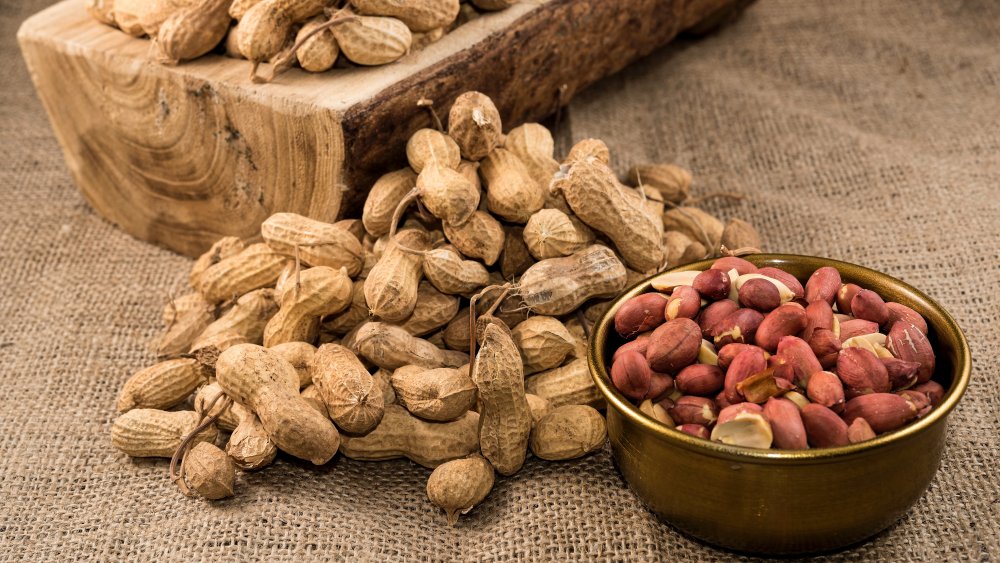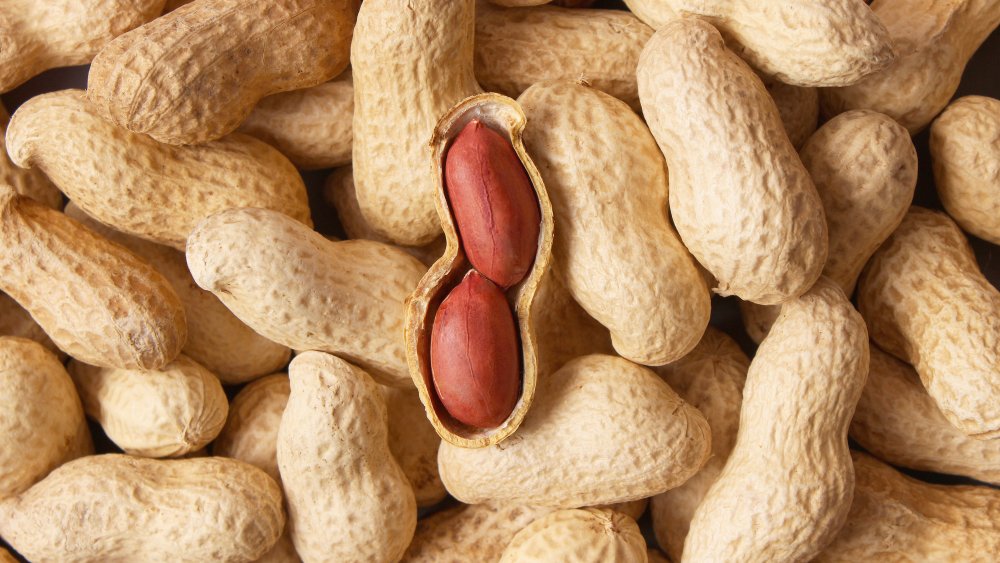You've Been Shelling Peanuts Wrong This Whole Time
Maybe you've decided to make your own peanut butter from scratch. God bless you. It takes about 540 peanuts to make a 12-ounce jar of peanut butter, according to the National Peanut Board. Do you plan on using your own peanut butter to make every one of the 3,000 peanut butter and jelly sandwiches that you're likely to down in a lifetime? Assuming you use about an ounce of peanut butter for a sandwich – based on numbers from the National Peanut Board - you'd be looking at roughly 250 12-ounce jars of peanut butter, amounting to about 135,000 peanuts that you'd have to shell over the course of your life.
Even without doing the math, anyone could tell you that that's a lot of peanuts that need shelling. Are you shelling peanuts the right way? Or are you spending valuable time and finger muscle effort to twisting, shattering, and otherwise butchering the peanut shelling process?
How to shell a peanut the right way
Follow eHow's advice, and shell your peanuts with minimal effort. First, protect the surface that you'll use to shell your peanuts. Newspapers, paper towels, and large bowls are all par for the course. Then, pick up your peanut. On one end of it, you'll find a small indentation. When you find it, position the peanut so that the indentation faces upwards. Now, squeeze the indentation with your thumb. Voila! You'll have a perfectly shelled peanut.
Your shelled peanuts, of course, will likely still have skin on them. That's where The Seattle Times comes in. To de-skin your peanuts more efficiently, all you've got to do is preheat your oven to 350 degrees. Spread out your nuts in a pan and bake them for five minutes. Let them cool before rubbing them between your hands.
Last, but not least, don't throw out your peanut shells! To be clear, we're not suggesting that you risk pesticides and intestinal blockages to eat them. Instead, as Garden Guides suggests, they make great materials for homemade mulches, kitty litters, kindling, compost, or packing materials.

